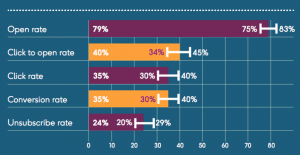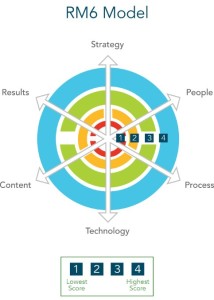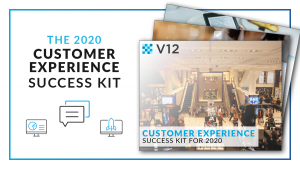As a former sales leader, I know all too well the challenges I faced in improving the sales hiring process for my team. Whether it was processes around leveraging or acquiring sales tools, hiring, recruiting, training, or introducing social selling tactics, many times I faced, “This is the way we’ve always done it.”
The number one challenge I faced as a sales leader was the successful onboarding of a new rep. In my experience, the onboarding of new sales reps is arguably the largest problem for sales leaders. Do it right and you have a killer sales rep. Do it wrong and you’ve killed the rep’s success and, worse yet, your brand. The number two problem I found was knowing when to pull the plug on a new hire that doesn’t seem to be working out. I always questioned, “Did we set him/her up for success, or did the individual truly fail?”
Anyone who knows me knows — I “Don’t Do ¡˥∀WɹON”
When it comes time to scale the sales team, hiring and ramping the right salespeople in the smartest way possible is the lifeline to a successful sales organization. Leadership here is key, especially for rapidly growing companies or anyone in dynamic and rapidly changing markets. While I loved many of the recruiters that worked with me, I felt then—and still feel now—that sales hiring and ramping is too important to leave to recruiters or HR, especially if they focus on the hiring of all employees rather than just sales.
Sure, a bad hire of any employee can be costly to the organization and possibly your personal brand. I know from firsthand experience what a bad sales hire can do to your brand as a leader. According to a recent CareerBuilder.com survey, 69 percent of companies experienced the negative consequences of a bad hire. Over 40 percent of them estimated the cost of that bad hire to be more than $ 25,000. Another 24 percent put the cost at over $ 50,000.
But in sales, the cost of a bad hire is worse. Beyond recruiting and salary expenses, you have the opportunity cost of missing multiple quarters of sales quota. According to Dano Rogers, Chief Revenue Officer of Revenue Engines, a bad sales hire can cost the typical company at least $ 100,000.
Time to think creatively, even disruptively, about your sales hiring process
One company pushing the envelope in this regard is Revenue Engines, a startup focused on reengineering the sales hiring and ramping process. Recently, I had the unique opportunity to sit with their investors and leadership team to discuss how to improve the hiring, onboarding, and training processes. Their model and philosophy highlights three points worthy of consideration.
- Don’t Overly Rely on Resumes and Interviews. Candidates cast their experience and past performance in a positive light. Let’s face it: their references are only going to be people who will say great things about them. Busy managers may also be tempted to make judgments based on the name or size of companies where the candidate used to work. Or worse yet, perhaps they will only focus on sales reps who came from within the same industry, thinking a rep needs to know the industry to be successful.
Past performance as a predictor of future performance is risky, which is why Revenue Engines puts little weight on resumes or interviews. To truly assess a proper fit, they do test drives, an interesting concept that is new and revolutionary to the sales industry.
- Test Drive, Then Hire. Salespeople cannot be evaluated in any meaningful way by a few interviews or a questionnaire. As Ilya Druzhnikov, a co-founder at Revenue Engines, and earlier at ConnectAndSell, points out, “It’s a stretch to say you’ve evaluated a sales candidate if that evaluation didn’t include time in the saddle. It’s like buying a car without a test drive.”

Time to consider a new sequence: test drive first, then hire. For example, Revenue Engines puts the top candidates in a four-to-eight-week ProofPoint™ program, where they spend time pitching the potential employer’s offering. True, this won’t be a full evaluation, especially for long sales cycles. However, it can indicate ability to move prospects through the funnel.
Some companies try to implement “test drives” by first trying someone as an independent rep. The problem is that, as contractors, these people don’t get proper training or support.
Which leads me to the third point . . .
- Ramp Both Before and After the Hire. Revenue Engines’ test drive is said to work only because training is done beforehand. Candidates are armed with the product/customer knowledge and specific sales process skills needed before a proper evaluation (both for a manager’s sales hiring decision and a candidate’s career move).
This training is not a one-day class but, rather, a longer process that integrates learning with doing—both during the test drive and after the hire. Such real-world reinforcement is important, because according to noted sales trainer Rob Jeppsen, salespeople fail to retain around 87 percent of what they learn in training.
Sadly, few sales reps get ramp-up support before or after they are hired. Most companies provide minimal training or rely on newbies shadowing veterans (picking up good and bad habits alike). But as a sales leader, do you honestly feel your organization has a systematic program for ramping new hires?
I agree with the observation of Revenue Engines’ co-founder, Weston Parker Headley: “Whether as a senior manager or consultant, I’ve rarely seen companies consistently apply a sales ramp-up process. No surprise it’s a frequent concern of commission-oriented candidates.”
Bottom line. No magic technology wand will automate the hiring and ramping of salespeople. It is a human process, but one ripe for improvement. As Headley learned from his prior consulting work alongside Clay Christensen (the Harvard professor who wrote the book on disruptive technology), “Disruptive innovation does not always involve sexy technology but does require fundamentally new processes and models.”
As a sales manager, do you have the dedication and courage to change the way you scale your sales team? If you remember anything, I challenge you to remember: “Don’t Do ¡˥∀WɹON”
Business & Finance Articles on Business 2 Community(84)
Report Post





